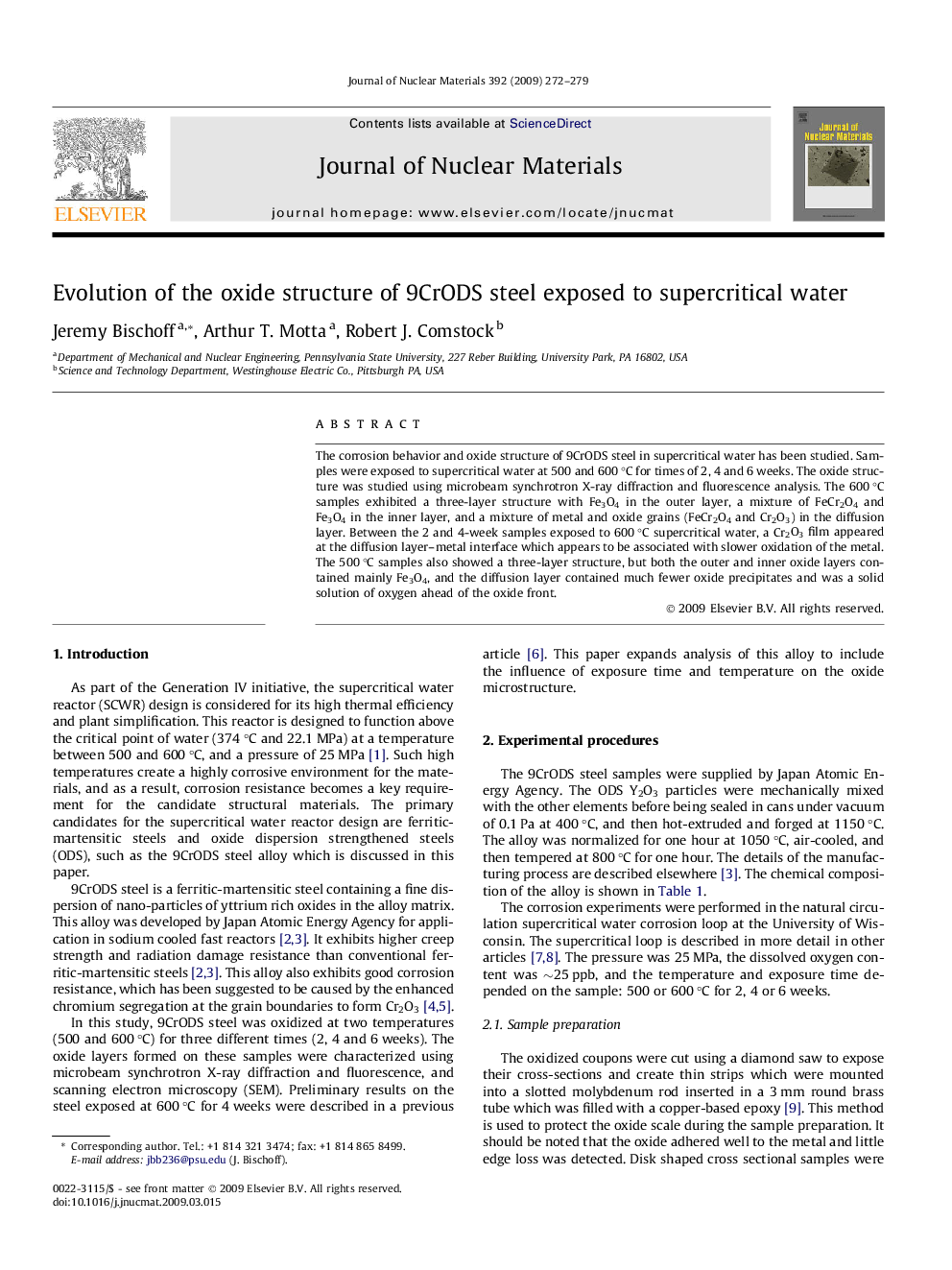| Article ID | Journal | Published Year | Pages | File Type |
|---|---|---|---|---|
| 1568423 | Journal of Nuclear Materials | 2009 | 8 Pages |
The corrosion behavior and oxide structure of 9CrODS steel in supercritical water has been studied. Samples were exposed to supercritical water at 500 and 600 °C for times of 2, 4 and 6 weeks. The oxide structure was studied using microbeam synchrotron X-ray diffraction and fluorescence analysis. The 600 °C samples exhibited a three-layer structure with Fe3O4 in the outer layer, a mixture of FeCr2O4 and Fe3O4 in the inner layer, and a mixture of metal and oxide grains (FeCr2O4 and Cr2O3) in the diffusion layer. Between the 2 and 4-week samples exposed to 600 °C supercritical water, a Cr2O3 film appeared at the diffusion layer–metal interface which appears to be associated with slower oxidation of the metal. The 500 °C samples also showed a three-layer structure, but both the outer and inner oxide layers contained mainly Fe3O4, and the diffusion layer contained much fewer oxide precipitates and was a solid solution of oxygen ahead of the oxide front.
